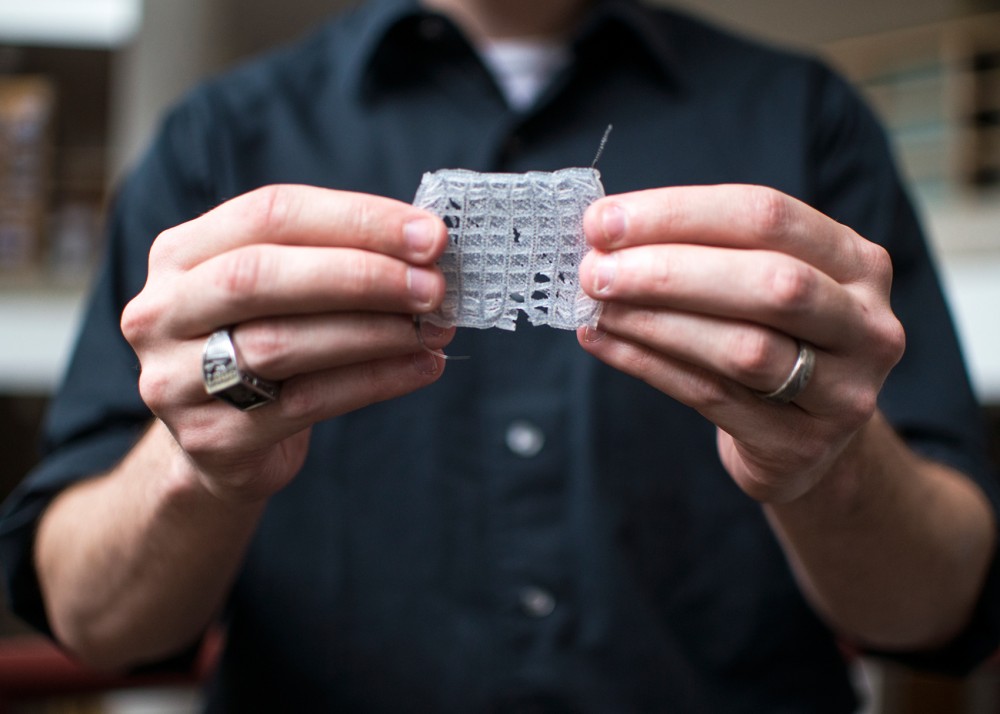A College of Design lab is working to make self-shrinking clothes — much like those seen in “Back to the Future” — a reality.
The University of Minnesota’s Wearable Technology Lab is making clothes that can shrink on command that could help people with circulatory problems — such as patients with diabetes — and could help treat simple sports injuries, said WTL Co-Director Brad Holschuh.
Current compression garments don’t necessarily help those who need them. Some options are too tight and unwieldy for patients to comfortably put on, said Lucy Dunne, the other lab co-director.
Other garment models need to be inflated, making them bulky and difficult to move in, said Mike Joyner, a professor of anesthesiology at the Mayo Clinic.
“[A self-shrinking garment] would be easier to use at home. During travel, you could potentially trigger it [by the patient’s] heartrate,” Joyner said.
Dunne said the compression technology the team is developing uses metal threads that contract, forming a preset shape, with the introduction of heat from an electrical current.
According to Joyner, the idea for their project was conceived when Holschuh presented the constricting fabric, intended for spaceflight applications, at a conference. He said he approached Holschuh about how the idea could be used for medical purposes.
The team received a grant last month and has since begun preliminary work on creating the product, Holschuh said.
Depending on how much electricity is sent through the garment, the team can control how much it contracts, he said.
For the time being, the team plans to power the garments with wall outlets, Dunne said. He hopes that a more portable solution can be devised in the future.
The technology has the potential to be used for shape-changing clothes, Dunne said.
Using the same technology, the team built a vest similar to the one from “Back to the Future” that conformed to Marty McFly’s body, she said.
“What this represents is [the lab’s] skills with engineering, textiles and clothing design, and [Mayo’s] skills in trying to understand the patient population and clinical application,” Joyner said.
Money for the project came from a three-way collaboration between the state of Minnesota, the Wearable Technology Lab and the Mayo Clinic. The team-up has developed several other successful products and has been a big source of innovation, he said.
“This is really one of the reasons that Minnesota continues to be one of the smallest states with two world-class research institutions,” Joyner said.


